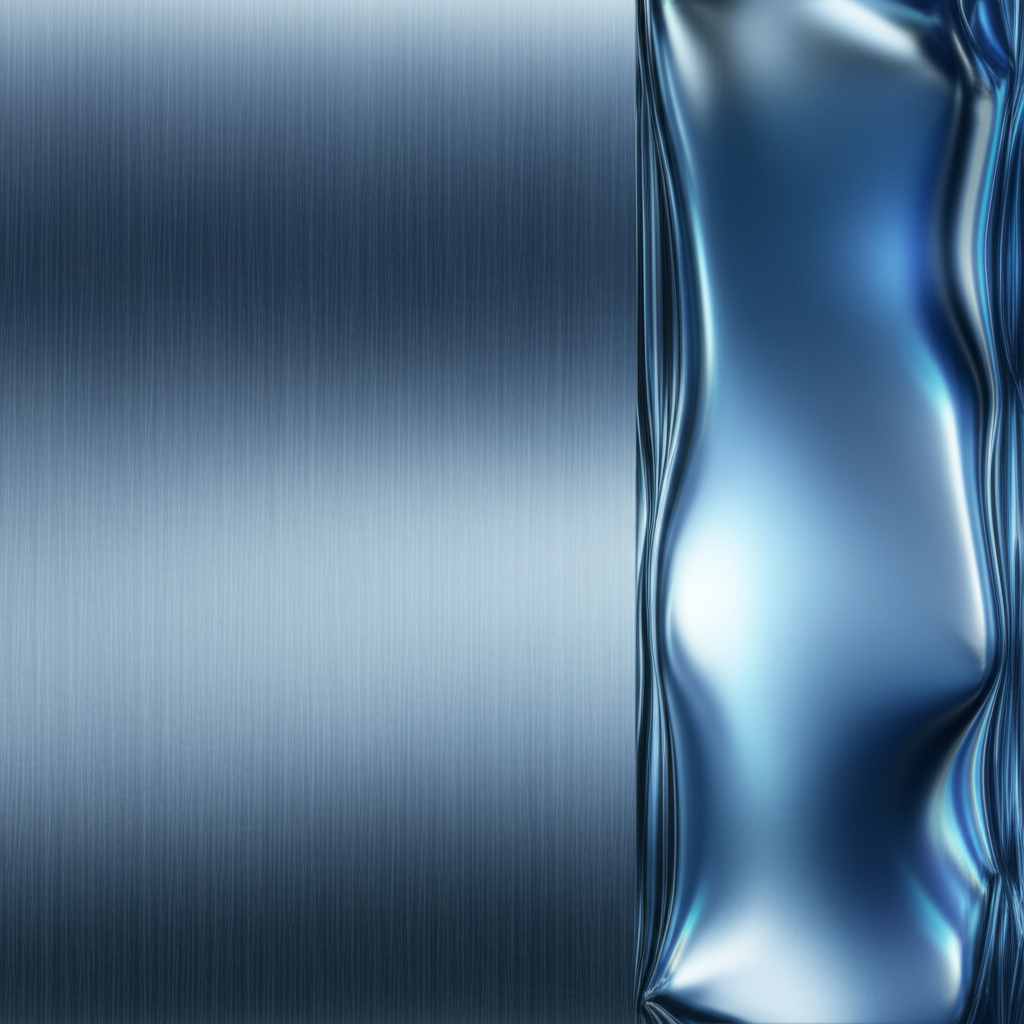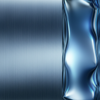Essential Finishes for CNC Machined Parts: A Tech Guide

TL;DR
Post-processing for CNC machined parts involves a range of secondary treatments applied after the initial machining is complete. These crucial steps transform a part from its 'as-machined' state to a finished product with enhanced properties. The primary goals are to improve durability, increase corrosion resistance, achieve specific aesthetic qualities, and ensure the component meets stringent functional requirements for its end-use application.
Understanding CNC Post-Processing: Purpose and Importance
After a part emerges from a CNC machine, it is in what is known as an 'as-machined' state. While dimensionally accurate, it often has visible tool marks and may not possess the required surface properties for its final application. Post-processing refers to any secondary operation performed on the part to modify its surface and enhance its characteristics. This is a critical stage in manufacturing that bridges the gap between raw machining and a production-ready component.
The importance of these finishing operations cannot be overstated, as they directly impact the part's performance, longevity, and appearance. Neglecting the proper finish can lead to premature failure from corrosion, wear, or fatigue. Conversely, a well-chosen finish ensures the part functions reliably in its intended environment, whether that requires extreme hardness, chemical resistance, or a specific visual appeal. According to manufacturing experts, these processes are essential for achieving the right material characteristics and function.
The key benefits of applying a post-processing finish to CNC machined parts include:
- Enhanced Durability and Wear Resistance: Processes like heat treating and anodizing significantly harden the surface of a part, making it more resistant to abrasion, friction, and impact over its operational life.
- Improved Aesthetics: Many applications require a specific look, from a uniform satin texture to a mirror-like polish. Finishes such as bead blasting, polishing, and powder coating provide precise control over the part's final appearance.
- Superior Corrosion Resistance: For parts exposed to moisture, chemicals, or harsh environments, finishes like passivation, anodizing, and plating create a protective barrier that prevents rust and degradation.
- Preparation for Further Treatment: Some finishes, like bead blasting, create an ideal surface texture for subsequent operations such as painting or powder coating, ensuring better adhesion and a more uniform final coat.

A Comprehensive Guide to Common Finishing Techniques
A wide array of finishing techniques is available, each offering unique benefits for different materials and applications. Understanding the fundamentals of these common processes is essential for any engineer or designer. The selection ranges from simple mechanical alterations to complex electrochemical treatments.
Bead Blasting
Bead blasting is a mechanical process that involves propelling a high-pressure stream of fine glass or plastic beads against the surface of a part. This action removes tool marks and surface imperfections, resulting in a uniform, non-directional matte or satin finish. It is an excellent choice for reducing surface reflectivity and is often used as a preparatory step before anodizing or painting to create a clean, textured surface that promotes adhesion. It is commonly applied to metals like aluminum, stainless steel, and titanium.
Anodizing (Type II & Type III)
Anodizing is an electrochemical process that grows the natural oxide layer on the surface of metals like aluminum and titanium, significantly increasing its thickness and durability. The part is submerged in an acid electrolyte bath and an electric current is passed through it. The resulting anodic oxide layer is extremely hard, corrosion-resistant, and non-conductive. Anodizing can also be used to add color to parts, as the porous surface can absorb dyes before being sealed. Protolabs explains that there are two common types: Type II (standard) offers good corrosion resistance and a decorative finish, while Type III (hardcoat) creates a much thicker, denser layer for applications requiring maximum wear and abrasion resistance.
Heat Treating
Heat treating encompasses several processes, including annealing, tempering, and case hardening, that use controlled heating and cooling to alter a metal's physical and mechanical properties. For instance, annealing can soften a metal to improve its machinability, while hardening and tempering can increase its strength and toughness. This finishing step is purely functional, aimed at achieving specific performance characteristics like hardness or ductility, and does not typically alter the part's aesthetic appearance.
Polishing and Brushing
For applications where aesthetics are paramount, polishing and brushing are used to achieve specific surface textures. Polishing uses progressively finer abrasives to smooth the surface, removing all tool marks and creating a smooth, mirror-like finish. Brushing, conversely, uses an abrasive wire brush to create a uniform, satin-like texture with fine parallel lines. This method is often used on stainless steel to achieve a decorative, high-end look while hiding minor surface imperfections.
Plating and Coating
Plating involves depositing a thin layer of another metal onto the part's surface. Common options include electroless nickel plating for uniform coverage and high corrosion resistance, or zinc plating for protecting steel parts from rust. Powder coating is another popular option, where a dry polymer powder is applied electrostatically and then cured with heat. This creates a durable, even, and corrosion-resistant finish that is tougher than conventional paint and available in a vast range of colors and textures.
How to Select the Right Post-Processing Method for Your Project
Choosing the correct post-processing method is a critical design decision that impacts cost, performance, and lead time. A systematic approach based on key project requirements will lead to the optimal choice. It involves balancing functional needs with aesthetic goals and budgetary constraints. When in doubt, consulting with a manufacturing partner can provide invaluable guidance.
Consider the following factors when making your selection:
- Material Compatibility: Not all finishes work with all materials. Anodizing, for example, is primarily for aluminum and titanium, while passivation is specific to stainless steel. Always verify that your chosen finish is compatible with your base material.
- Functional Requirements: Define the primary purpose of the finish. Is it to increase hardness and wear resistance (heat treating, Type III anodizing), prevent corrosion (passivation, plating), or provide electrical conductivity (chromate conversion coating)? The end-use environment is a key determinant.
- Aesthetic Goals: What is the desired final look of the part? A matte, non-reflective surface is best achieved with bead blasting, while a high-gloss, reflective look requires polishing. Powder coating offers a wide spectrum of color options for branding and visual differentiation.
- Cost and Production Volume: Finishing processes vary significantly in cost. Simple options like bead blasting are generally less expensive than multi-step processes like hardcoat anodizing or electroless nickel plating. For high-volume production, the per-part cost of the finish becomes a major budgetary factor.
Partnering with a capable manufacturer is essential when navigating these choices. For instance, service providers like XTJ, which offers rapid prototyping and volume production, can provide expert guidance on selecting the best finish for a specific material and application, ensuring components meet demanding specifications with tolerances down to +/- 0.005mm.
The table below summarizes key characteristics of common finishing methods to aid in the selection process.
| Finishing Method | Primary Goal | Common Materials | Key Benefit |
|---|---|---|---|
| Bead Blasting | Aesthetics / Surface Prep | Aluminum, Steel, Titanium | Creates a uniform matte finish |
| Anodizing (Type III) | Durability / Corrosion Resistance | Aluminum, Titanium | Extreme hardness and wear resistance |
| Powder Coating | Aesthetics / Corrosion Resistance | Most Metals | Durable, colorful, and protective finish |
| Passivation | Corrosion Resistance | Stainless Steel | Enhances natural rust prevention |
| Electroless Nickel | Wear & Corrosion Resistance | Steel, Aluminum | Provides a uniform, hard coating |

Clarification: Physical Finishing vs. Post-Processor Software
It is important to clarify a point of potential confusion within the CNC industry regarding the term 'post-processor'. While this article focuses on the physical post-processing treatments and surface finishes applied to a machined part, the term also refers to a critical piece of software in the CNC workflow.
A software post-processor is a translator or driver that converts the generic toolpath data from a CAM (Computer-Aided Manufacturing) program into the specific G-code that a particular CNC machine model can understand and execute. Each machine has a unique controller and configuration, and the post-processor ensures the instructions are formatted correctly. This software function is entirely separate from the physical finishing operations like anodizing or bead blasting discussed here.
Frequently Asked Questions
1. What is post-processing in CNC machining?
In CNC machining, post-processing can refer to two distinct concepts. The most common meaning, and the focus of this article, involves the physical secondary operations performed on a part after it is machined. These include treatments like bead blasting, anodizing, heat treating, and powder coating to improve a part's durability, appearance, and corrosion resistance. The second meaning refers to a software post-processor, which translates CAM toolpaths into machine-specific G-code for the CNC controller.
2. What are the processes of post-machining?
Post-machining encompasses a wide range of processes designed to finish a part. Key categories include mechanical finishing (e.g., bead blasting, polishing, brushing), thermal treatments (e.g., heat treating, annealing), electrochemical treatments (e.g., anodizing, electropolishing), and coating applications (e.g., powder coating, painting, plating with materials like nickel or zinc). The specific processes chosen depend on the part's material, its intended application, and the desired functional and aesthetic outcomes.
-
Posted in
Anodizing, cnc machining, metal finishing, post-processing, surface finishing





